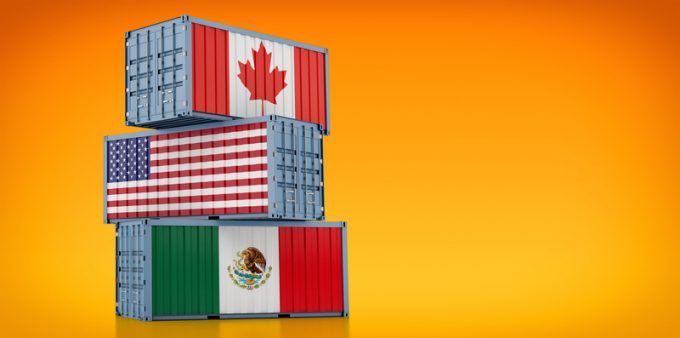MSC 'to offer feeder vessel' to get stranded Canadian cargo to its destination
MSC appears to have decided against leaving Montreal-destined shipments at the port of Halifax, and ...
UPS: MULTI-MILLION PENALTY FOR UNFAIR EARNINGS DISCLOSUREWTC: PUNISHEDVW: UNDER PRESSUREKNIN: APAC LEADERSHIP WATCHZIM: TAKING PROFITPEP: MINOR HOLDINGS CONSOLIDATIONDHL: GREEN DEALBA: WIND OF CHANGEMAERSK: BULLISH CALLXPO: HEDGE FUNDS ENGINEF: CHOPPING BOARDWTC: NEW RECORDZIM: BALANCE SHEET IN CHECKZIM: SURGING
UPS: MULTI-MILLION PENALTY FOR UNFAIR EARNINGS DISCLOSUREWTC: PUNISHEDVW: UNDER PRESSUREKNIN: APAC LEADERSHIP WATCHZIM: TAKING PROFITPEP: MINOR HOLDINGS CONSOLIDATIONDHL: GREEN DEALBA: WIND OF CHANGEMAERSK: BULLISH CALLXPO: HEDGE FUNDS ENGINEF: CHOPPING BOARDWTC: NEW RECORDZIM: BALANCE SHEET IN CHECKZIM: SURGING

There was a marked shift in supply chains in Q2 – with profound ramifications for logistics infrastructure and manpower – as Mexico overtook China as the top exporter to the US.
US imports from Asia slumped in the first quarter, according to the latest quarterly Supply Chain Stability Index, published by the Association for Supply Chain Management (ASCM) in tandem with KPMG.
Inbound ocean freight from Asia was down 27% year on year, while airfreight imports from the region plummeted 50%.
China, which has been the biggest target for re-shorings, was overtaken by Mexico as the top origin of US imports in the quarter, with a 15% advantage. Imports from Canada also surpassed flows from China, by 5%.
US freight exports to Europe and Asia also contracted, albeit at less steep rates: waterborne fell 26% and 6%, respectively, while airfreight to Asia dropped 15%, but to Europe climbed 5%.
These developments necessitate adjustments in supply chains, warned the ASCM.
“Re-shoring and near-shoring is going to put additional pressure on already-strained resources, both in terms of infrastructure and labour,” said Douglas Kent, EVP of strategy and alliances.
On the labour side, there will be less need for port workers and labour handling intermodal transfers and customs clearance. Instead, more personnel will be required at land ports and to handle road transfers. The shift also augurs an increased need for truckers, which will exacerbate the shortage.
But these structural changes will not happen overnight; they will take years, said Mr Kent. On the infrastructure front, he sees the greatest need for upgrades on the Mexican side.
The accelerating migration of manufacturing from Asia to Mexico brings a considerable shortening of supply chains and a reduction in cycle times, but this does not mean companies could return to the just-in-time model. The index shows an improvement in supply chain stability, but only to a limited extent. it shows stability at a reading of 1.7 for the first quarter, down only slightly from 1.88 in the previous quarter. A reading of 1 indicates normal stability.
Mr Kent noted that disruptive elements continued to be a big factor in supply chain strategy. He mentioned weather, geopolitical risk, cybersecurity and sustainability as factors dictating a continuing focus on just-in-case strategies, which translates into a continuation of elevated inventory levels as a buffer against risk and disruption, albeit less than in recent years.
A greater emphasis on collaboration has been another frequent theme for supply chain management. Working with suppliers and logistics providers on the same continent does not necessarily translate into easier collaboration, nor does leaving Asia mean existing relationships end, as a growing number of Asian suppliers are establishing footholds in Mexico, Mr Kent pointed out.
He emphasised that a shift to near-shoring required adjustment to the entire supply chain, not only the journey from raw materials sourcing to shipping finished products. Shippers also need to re-calibrate their return logistics arrangements, he said.
Comment on this article